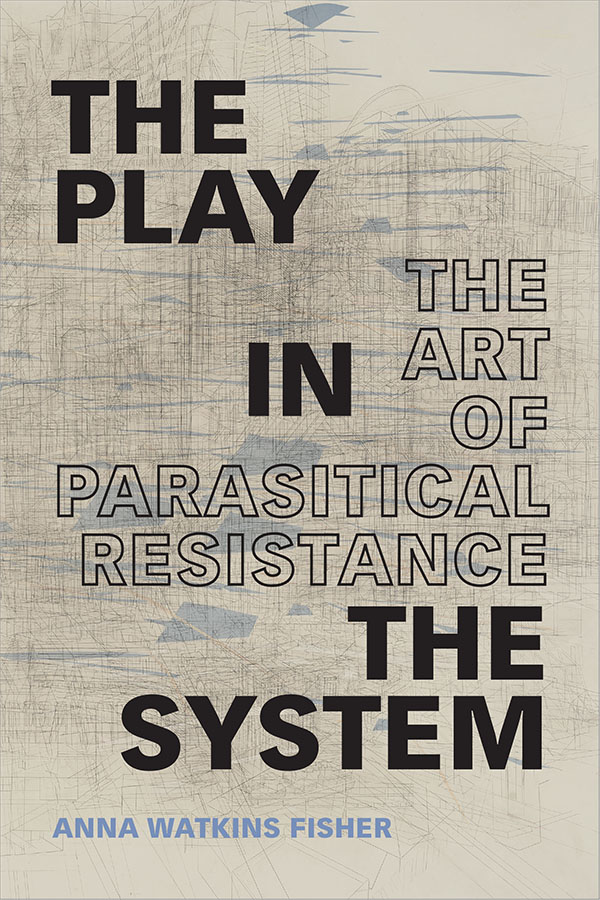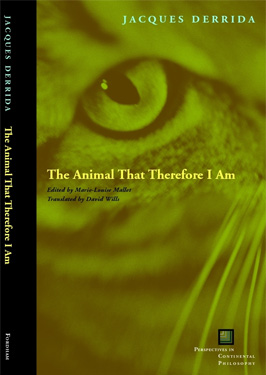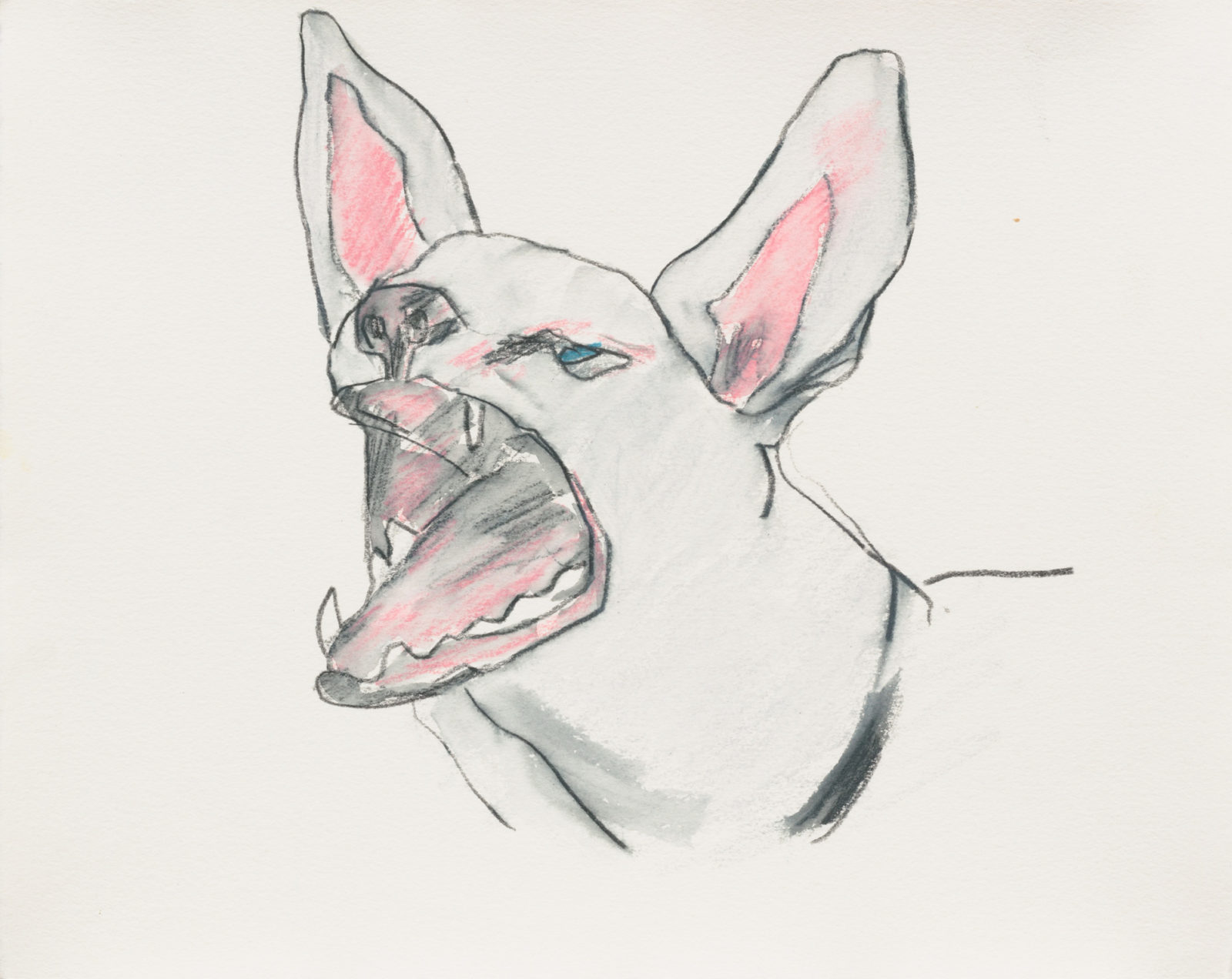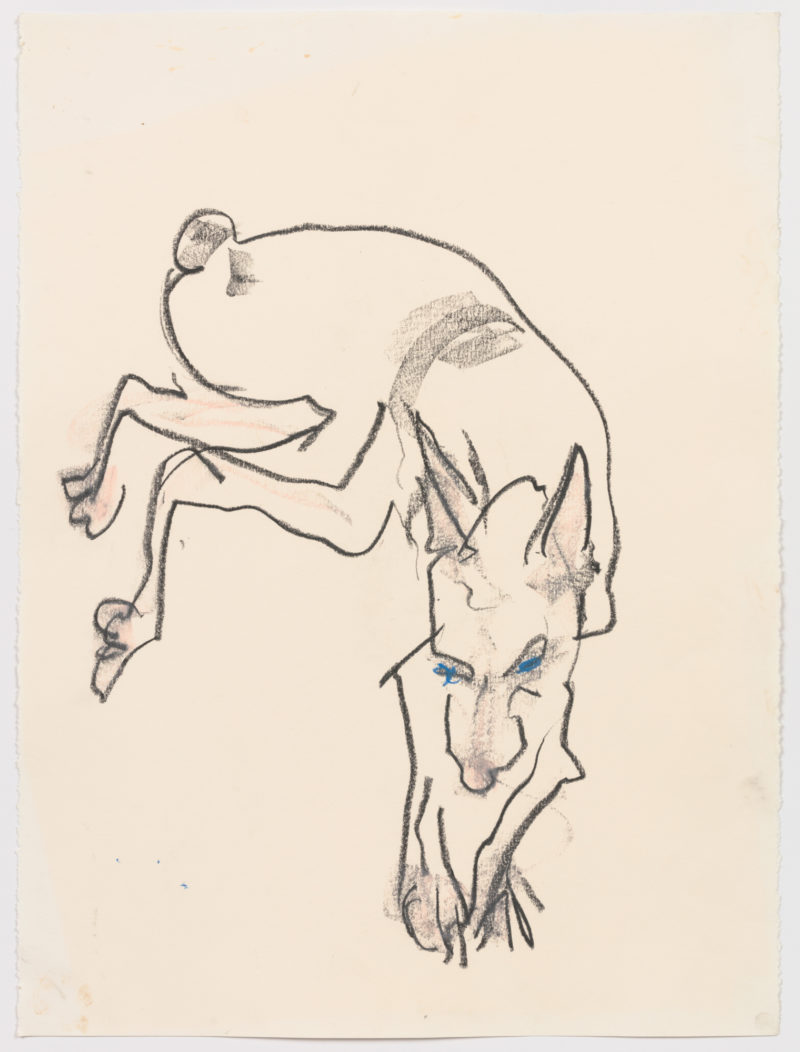<----- go back
phenotype
the set of observable characteristics of an individual resulting from the interaction of its genotype with the environment.
https://pamppy.dog/services/
doggo spa
Deleuze, Gilles and Félix Guattari. Becoming Animal
Erin Manning

Animal Studies Bibliography
Deleuze, Gilles and Félix Guattari. 2007. Becoming Animal. In Linda Kalof and Amy Fitzgerald (eds.), The Animals Reader: The Essential Classical and Contemporary Writings , 37-50. Oxford, UK: Berg.
(Summarized by Jessica Bell, Animal Studies Program, Michigan State University)
The essay “Becoming Animal” in this edited collection is selected from a much longer work by Gilles Deleuze and Guattari, a work entitled A Thousand Plateaus: Capitalism and Schizophrenia. “Becoming Animal” references and relies upon terminology that is defined in previous chapters of A Thousand Plateaus and other previous works by the authors and thus it is useful to briefly define these terms. Deleuze and Guattari (1987) differentiate between two ways of conceptualizing phenomena and knowledge: the arborescent model and the rhizome. The arborescent model is hierarchical, has a center and peripheries, has a beginning, middle, and end, and has a strong spinal axis of theory and organization. In contrast, the rhizome is anti-hierarchical, grows in a lateral manner with no center or periphery, has no beginning, middle, or end, and has no privileged viewpoint. Deleuze and Guattari endorse the rhizome model and write that becoming-animal, the focus of this essay, “is a rhizome, not a classificatory or genealogical tree” (p. 39). Deleuze and Guattari (1987) also introduce the concepts of the molar and the molecular. These can be thought of as different scales or components that intersect with one another at multiple levels (individual, social, political, etc.). These are complex concepts but, overall, the molar is associated with that which is conscious/perceptible, that which territorializes, that which is relatively rigid, and that which operates on a macro level. The molecular is associated with that which is unconscious or subtle, that which de-territorializes, that which is fluid, and that which operates on a micro level. Becoming (for example, becoming-animal) is a molecular process.
This differentiation between molar and molecular becomes relevant when the authors differentiate between the three different types of animals. The first type of animal is the Oedipal animal. This animal is individualized and sentimentalized. In other words, this type of animal has a unique history and name that arises from its emotional alliance with a human. Deleuze and Guattari refer to this type of animal as Oedipal because it is also the type of animal that Freudian psychoanalysis explores as (or reduces to) symbols of intimate family relationships. The second type of animal is the Jungian, or “archetype”, animal. This is the animal that has a symbolic presence in the myths, rituals, and spiritual beliefs of many human cultures. It is the third type of animal, the demonic animal, in which Deleuze and Guattari are most interested. It is only in relationship to the demonic animal that becoming-animal can occur. Unlike the other two types of animals, and like the process of becoming-animal, the demonic animal has a molecular character (Beaulieu 2011). This is because the demonic animal, like the process of becoming-animal, is a flexible and ever-evolving multiplicity. Like the process of becoming-animal, it exists in a realm, a fold, all of its own. However, Deleuze and Guattari also write: “Cannot anyanimal be treated in all three ways?” Thus, these three “kinds” of animals are modes of relating to animals, not inherent characteristics of the animals themselves.
Deleuze and Guattari refer to becoming-animal as a unique process that resists comparisons to other processes. They write that “there is a reality specific to becoming” and “becoming is a verb with a consistency all its own” (p. 39). Becoming-animal is also not the only form of “becoming”. Deleuze and Guattari also refer to “becomings-woman” and “becomings-child” (p. 45). All these forms of becoming share certain characteristics. Becoming is not imitation, because imitation implies a shift from identity A to identity B (Beaulieu 2011). Rather than implying a shift from one identity to another identity, or the synthesis of two identities, becoming implies the deconstructing of identity itself. Becoming is neither regressive nor progressive. Regression and progression imply that certain forms are higher, or more central, than others. The notion of becoming by definition rejects this hierarchical and linear structure. In order to stress this aspect of becoming, Deleuze and Guattari refer to becoming not as “evolution” but as “involution, on the condition that involution is in no way confused with regression” (p. 39). Thus, Deleuze and Guattari reject a model of human-animal relating that views humans as “higher” on the “evolutionary tree”. A final important aspect of becoming is that becomings are always “minoritarian” (p. 45). Deleuze and Guattari conceptualize the notions of minor and major not in terms of numerical density or importance, but rather in terms of power (Beaulieu 2011). Thus, minoritarian groups are groups that “are oppressed, prohibited, in revolt, or always on the fringe of recognized institutions” (p. 45). In other words, it is through their position on the fringe or the borderline that minoritarian groups open up the space for becoming. Thus one can speak of becoming-woman or becoming-animal, but not becoming-man or becoming-human.
Deleuze and Guattari then discuss how the process of becoming-animal occurs. The first point they make is that becoming-animal occurs through contagion, not filiation. Filiation, or reproduction through hereditary descent, does not allow for the multiplicity of difference that contagion allows. For, when a new organism is produced through filiation, “the only differences retained are a simple duality between sexes within the same species, and small modifications across generations” (p. 41). Whereas, in contagion, there can be multiplicities that span across multiple worlds: plant, animal, and human. Deleuze and Guattari give the example of a becoming-animal interaction between a wasp and an orchid. The orchid, by appropriating physiological and chemical properties of the female wasp, entices the male wasp to pollinate it (Beaulieu 2011). Filiation does not apply here, since there can be no orchid-wasp hybrid produced through this interaction. Rather this interaction represents a becoming, a state of being that transcends the boundaries of classified distinct “species.”
The second key point about the process of becoming-animal is that this process involves both the anomalous and the multiplicity (or pack). Deleuze and Guattari define the anomalous as “neither an individual not a species… but a phenomenon of bordering” (p. 43). In other words, the anomalous is both part of a pack/multiplicity and an exceptional loner or leader within that pack.
SOLO EXHIBITION SEPTEMBER 27TH - OCTOBER 6TH
TRIXIE GALLERY, THE HAGUE
https://www.tamardewaal.nl/over-tamar/
Tamar de Waal rechtsfilosoof
https://thomasspijkerboer.eu/
Thomas Spijkerboer migration professor at the Vrije Universiteit amsterdam
PLACES
THEORY
PEOPLE/ INTERVIEWS
Brom, companion species of family Galogaza / not living in Amsterdam/ based in Hamburg
Donna Haraway,
When species meet
EXHIBITION
Construction - Alicia / spatial design
Graphic design - Ivana Cavic
Photography - Vlad
Sarphati park
From Introduction:
becoming with - becoming worldly
alter globalisation
messmates
to be one is always to become with many
the figures are at the same time creatures of imagined possibility and creatures of fierce and ordinary reality
naturalcultural
concrescence of prehensions
American Association of Lapdogs
lapdogs and laptops
gods, machines, animals, monsters, creepy crawlies, women, servants and slaves, and noncitizens in general. (page 10)
culturally normal fantasy of human exceptionalism (page 11)
Freud descried three great historical wounds to the primary narcissism of the self-centered human subject; 1)COpernican wound that removed Earth itself, man's home world from the centre of the cosmos 2) Darwinian, which put Homo sapiens firmly in the world of other critters 3) Freudian, which posited an unconscious that undid the primacy of conscious processes (page 11)
The Great Divides of animal/human, nature/culture, organiz/technical, wild/domestic .... respect and response (page 15)
Posthumanism, postfeminism
Karen Barad's term 'intra-actions'at many scales of space-time that need rethinking, not getting beyond one troubled category for a worse one even more likely to go postal (page 17)
Becoming is always of a different order than filiation. It concerns alliance. (page 28)
All worthy animals are a pack; all the rest are either pets of the bourgeoisie or state animals symbolizing some kind o divine myth. (page 29)
The old, female, small, dog-and cat-loving: these are who and what must be vomited out by those who will become-animal. (page 30)
COMPANION SPECIES
NON HUMAN ANIMALS
MESSMATES
Autopoiesis is self making (page 32)
Do we prefer living with predictable sheep or with sheep that surprise us and that add to our definitions of what 'being social' means? (page 35)
Whom and what do I touch when I touch my dog? (page 35)
Caring means becoming subject to the unsettling obligation of curiosity, which requires knowing more at the end of the day than at the beginning. (page 36)
more liveable "other worlds" (autres-mondialisations) inside earthly complexity than one could ever have imagined when first reaching out to pet one's dog. (page 41)
Canis lupus familiaris, indeed the familiar is always where the uncanny lurks
(page 45)
BIOCAPITAL
As an online report on the pet food and supplies market from MindBranch Inc. for 2024 stated: "In the past people may have said their pet'is like a member of the family', but during 1998-2003 this attitude has strengthened, at least in termsn of money spent on food with quality ingredients, toys, supplies, services, and healthcare'. The consumer habits of families have long been the locus for critical tehory's efforts to understand the category formations that shape social beings (such as gender, race and class). (page47)
Companion-species kin patterns of consumerism should be a rich place to goet at the relations that shape emergent subjects, not all of whom are people, in lively capital's naturecultures. Properly mutated, the classics, such as gender, race and class, hardly disappear in the world - far from it; but the most interesting emergent categories of relationality are going to have to acquire some new names, and not just for the dogs and cats. (page 47)
food delivery devices to help out dogs who are alone too much. Dogs in capitalist technoculture have acquired the "right to health". (page 49)
CANINE CONSUMER CULTURE (page 51) vacation packages, adventure trips, camp, cruises, clothing, toys of all kinds, day care services, designer beds ... DOG HOTEL with spa??
Dog custody battle (page 52)
DOGDOM (page 58)
Animals end up: permanent dependents ("lesser humans"), utterly natural ("nonhuman") or exactly the same ("humans in fur suits").
maybe sharing suffering is about growing up to do the kind of time-consuming, expensive, hard work, as well as play, of staying with all the complexities for all of the actors, even knowing that will never be fully possible. (page 83)
Isabelle Stenger's 'cosmopolitics' (page 83) forbidding both the dream (and nightmare) of a final solution and also the fantasy of transparent and innocent communication, cosmopolitics is a practice for going on, for remaining exposed to consequences, for entangling materially with as many of the messy players as possible. (page 106)
imaginative politics that rearticulates the relations of minds and bodies (page 89)
#worlding - speculative fiction and speculative fact (page 93)
dog breeds - I knew they were an affectation, an abuse, an abomination, the embodiment of animalizing racist eugenics, everything that represents modern people's misuse of other sentient beings for their own instrumental ends. (page 96)
#biowealth - biopolitics of human class, nation, and ethnicity that are entangled with kinds as well as with institutionalized breeds of nonhuman animals (page 100)
the nonworking dogs are the offspring of class, race, and gender formations that are rooted in the conformation show world and affectional pet culture (page 105)
"New" names mark changes in power, symbolically and materially remaking kin and kind. (page 135)
Sharing the risk of gum disease and of genetic biosociality is part of the companion-species bond. (page 135)
A DANCE OF BECOMING (page 138)
the body is always in-the-making; it is always a vital entanglement of heterogeneous scales, times, and kinds of beings webbed into fleshly pressence, always a becoming, always constituted in relating. (page 163)



Joan Jonas
OTHER ART
Animorphism
OTHERKIN
"A thousand plateaus - Capitalism & Schizophrenia"
Gilles Deleuze & Felix Guattari
232. Becoming-Intense, Becoming-ANimal, Becoming-Imperceptible...
233 "Willard" a movie, unpopular because the heroes are rats
becoming-rat
235 the relationships between animals are bound up with the relations between man and animal, man and woman, man and child, man and the elements, man and the physical and microphysical universe.
237. Levi-Strauss is always encountering these rapid acts by which a human becomes animal at the same time as the animal becomes ....? - blocks of becoming
!!! 237.A becoming is not a correspondence between relations. But neither it is a resemblance, an imitation, or, at the limit, an identification. !!!
238. Becomings-animal are neither dreams nor phantasies. They are perfectly real. But, which reality is at issue here? For if becoming animal does not consist in playing animal or imitating an animal, it is clear that the human being does not "really" become an animal any more than the animal "really" becomes something else. Becoming produces nothing other than itself. We fall into a false alternative if we say that you either imitate or you are.
239. Becoming is certainly not imitating, or identifying with something; neither is it regressing-progressing; neither is it corresponding, establishing corresponding relations; neither is it producing, producing a filiation or producing through filiation. Becoming is a verb with a consistency all its own; it does not reduce to, or lead back to, "appearing', "being", "equaling" or "producing".
A becoming-animal always involves a pack, a multiplicity. What would a lone wolf be? Or a whale, a louse, a a rat, a fly? The louse is a lousing.
240. Affect is not a personal feeling, nor is it a characteristic; it is the effectuation of a power of the pack that throws the self into upheaval and makes it real.
We must distinguish three kinds of animals. First, individuated animals, family pets, sentimental, Oedipal animals each with its own petty history, "my" cat, "my" dog. These animals invite us to regress, draw us into a narcissistic contemplation, and they are the only kind of animal psychoanalysis understands, the better to discover a daddy, a mommy, a little brother behind them. Anyone who likes cats or dogs is a fool.
And then there is a second kind: animals with characteristics or attributes; genus, classification, or State animals; animals as they are treated in the great divine myths... There is always the possibility that a given animal, a louse, a cheetah or an elephant, will be treated as a pet, my little beast.
242. interkingdoms
243. Every Animal has its Anomalous.
247. becoming-animal is an affair of sorcery because 1)it implies an initial relation of alliance with a demon; 2) the demon functions as the borderline of an animal pack, into which the human being passes or in which his or her becoming takes place, by contagion; 3) this becoming itself implies a second alliance, with another human group; 4) this new borderline between the two groups guides the contagion of animal and human being within the pack. There is an entire politics of becomings-animal.
249. A fiber stretches from a human to an animal, from a human or an animal to molecules, from molecules to particles, and so on to the imperceptible.
251. Lawrence,in his becoming-tortoise, moves from the most obstinate animal dynamism to the abstract, pure geometry of scales and "cleavages of division", without, however, losing any of the dynamism: he pushes becoming-tortoise all the way to the plane of consistency. Everything becomes imperceptible.



255. For the vertebrate to become an Octopus or Cuttlefish, all it would have to do is fold itself in two fast enough to fuse the elements of the halves of its back together, then bring its pelvis up to the nape of its neck and gather its limbs together into one of its extremities, like "a clown who throws his head and shoulders back and walks on his head and hands".
257: the Tick, attracted by the light, hoists itself up to the tip of a branch; it is sensitive to the smell of mammals, and lets itself fall when one passes beneath the branch; it digs into its skin, at the least hairy place it can find. Jus three affects; the rest of the time the tick sleeps, sometimes for years on end, indifferent to all that goes on in the immense forest.
258: Vladimir Slepian: "I'm hungry, always hungry, a man should not be hungry, so I'll have to become a dog - but how? This will not involve imitating a dog...I must succeed in endowing the parts of my body with relations of speed and slowness that will make it become dog...For I cannot become dog without the dog itself becoming something else. "If I wear shoes on my hands...But how will I be able to tie the shoes on my second hand?"
259: Jung killed becoming-animal; they see the animal as a representative of drives, or a representation of the parents. They do not see the reality of a becoming-animal, that it is affect in itself, the drive in person, and represents nothing.
262: It is the wolf itself, and the horse, and the child, that cease to be subjects to become events, in assemblages that are inseparable from an hour, a season, an atmosphere, an air, a life.
263: Virginia Woolf: "The thin dog is running in the road, this dog is the road"
272: Becoming-animal is only one becoming among others. A kind of order or apparent progression can be established for the segments of becoming in which we find ourselves.

Confessional television
273: Where does the boundary between human and animal lie?
One does not in reality become animal...
274: Do not imitate a dog, but make your organism enter into composition with something else in such a way that the particles emitted from the aggregate thus composed will be canine as a function of the relation of movement and rest, or of molecular proximity, into which they enter. Clearly, this something else can be quite varied, and be more or less directly related to the animal in question: it can be the animal's natural food (dirt and worm), or its exterior relations with other animals (you can become-dog with cats, or become-monkey with a horse), or an apparatus or prosthesis to which a person subjects the animal (muzzle and reindeer, etc.) or something that does not even have a localizable relation to the animal in question.
If we interpret the word "like" as a metaphor, or propose a structural analogy of relations, we understand nothing of becoming.
* The actor Robert De Niro walks "like" a crab in a certain film sequence; but, he says, it is not a question of his imitating crab; it is a question of making something that has to do with the crab enter into composition with the image, with the speed of the image. That is the essential point for us: you become-animal only if, by whatever means or elements, you emir corpuscles that enter the relation of movement and rest of the animal particles. You become animal only molecularly. You do not become a barking molar dog, but by barking, if it is done with enough feeling, with enough necessity and composition, you emit a molecular dog. Man does not become wolf, or vampire, as if he changed molar species; the vampire and werewolf are becomings of man, in other words, proximities between molecules in composition, relations of movement and rest, speed and slowness between emitted particles.
275: Albertine can always imitate a flower, but it is when she is sleeping and enters into composition with the particles of sleep that her beauty spot and the texture of her skin enter a relation of rest and movement that place her in the zone of a molecular vegetable: the becoming-plant of Albertine. And it is when she flees, launches down a line of flight, that she becomes-horse, even if its is the horse of death.
275: All becomings are molecular: the animal, flower, or stone one becomes are molecular collectives, haecceities, not molar subjects, objects, or form that we know from the outside and recognize from experience, through science, or by habit
279: "Monsieur Zero" by Paul Morand



'Animal Acts - Performing Species Today' by Una Chaudhuri and Holly Hudges
page 32: Joy is not fun, joy knows suffering...
page 111: Equestrian
page 26: "The Dog & Pony Show"; Your family, if you have one, recedes into the background. Herded into a small corner of your heart to make room for the big one: you and your dog."
Joanna Russ "The Female Man"